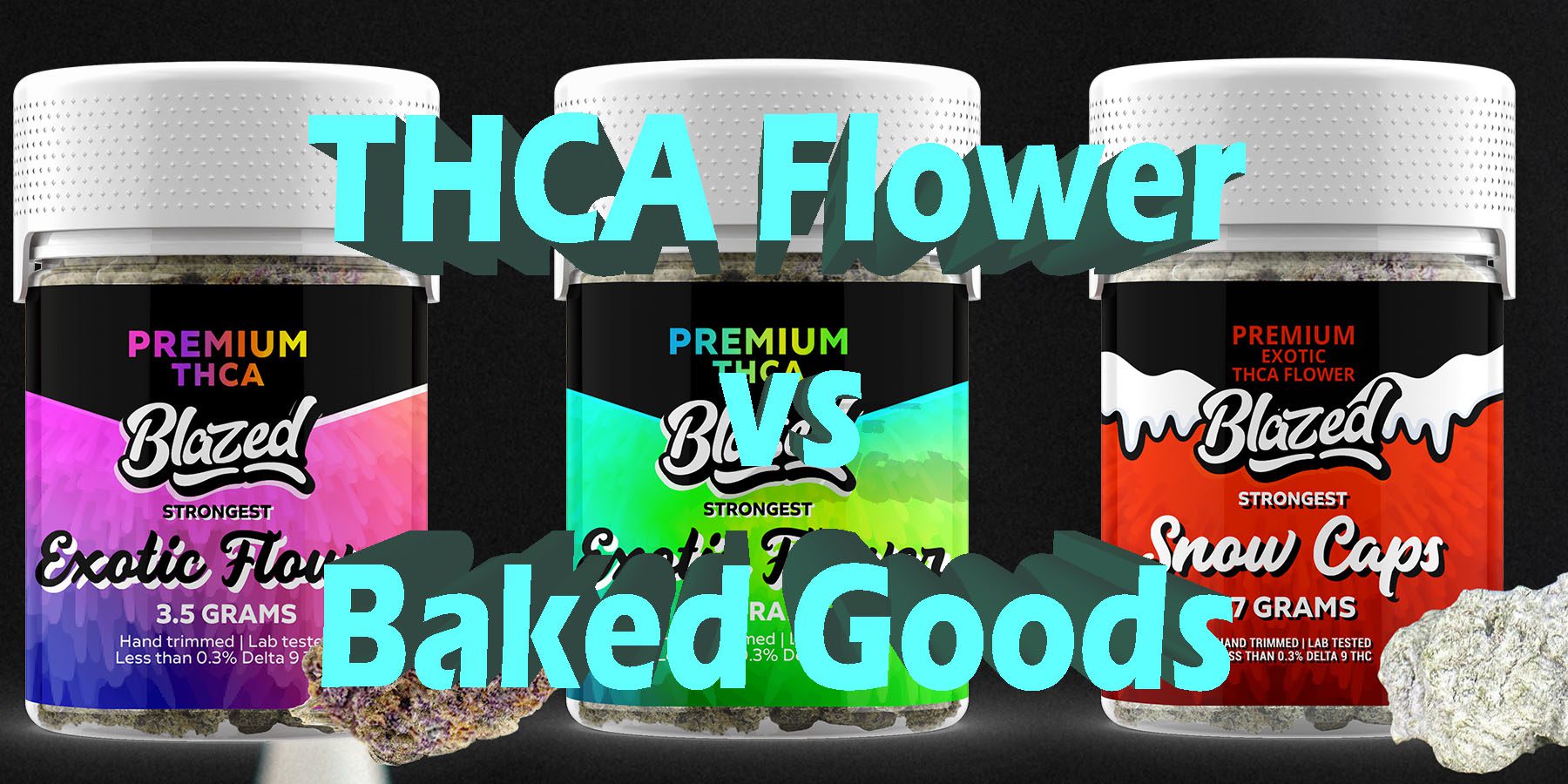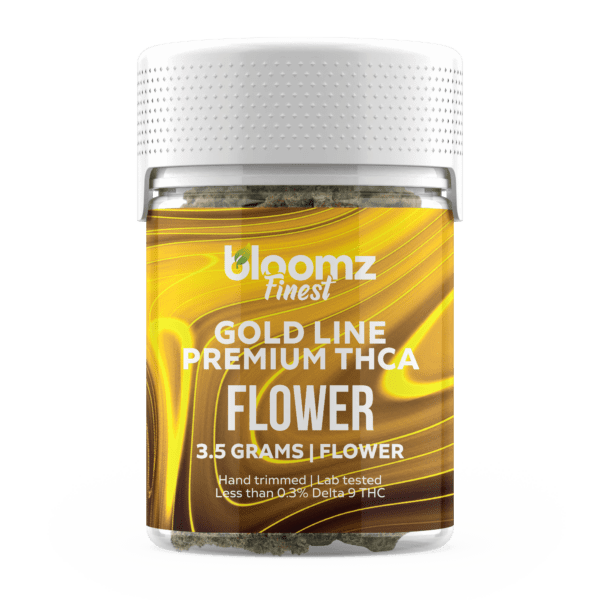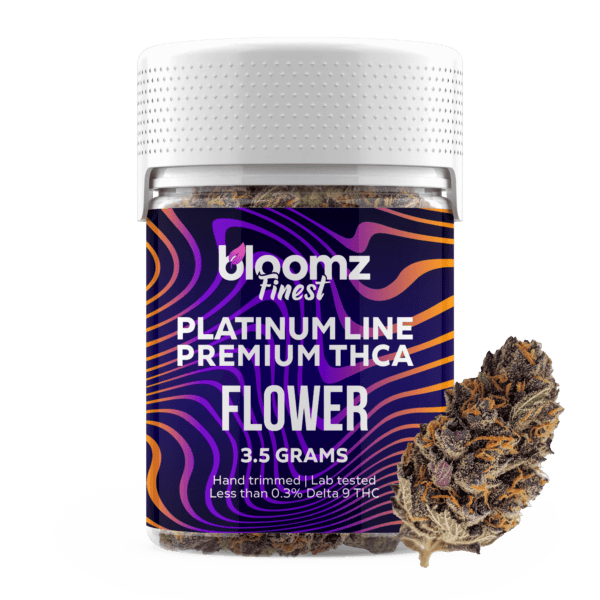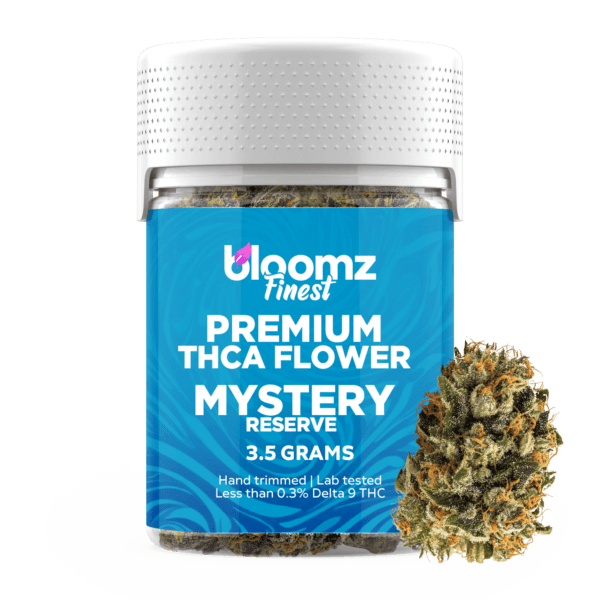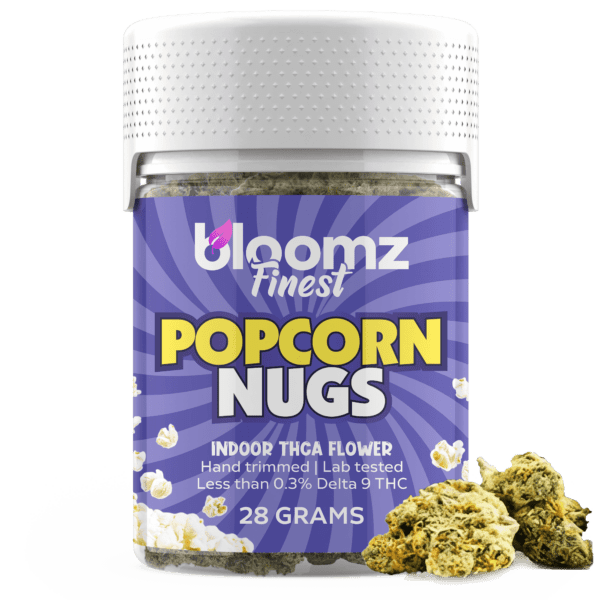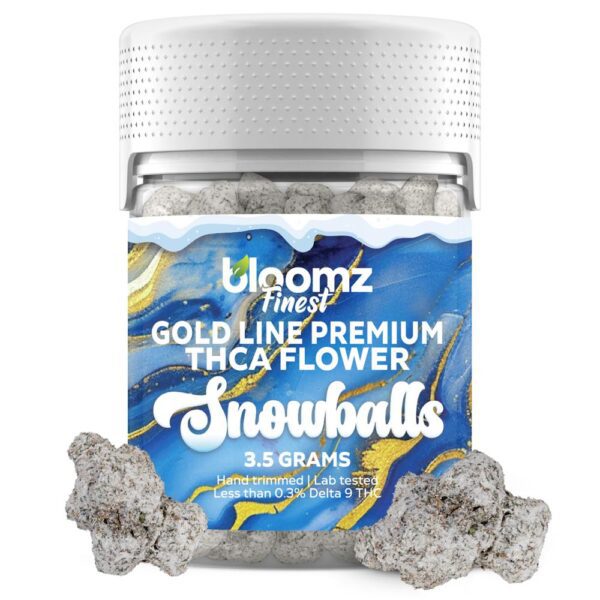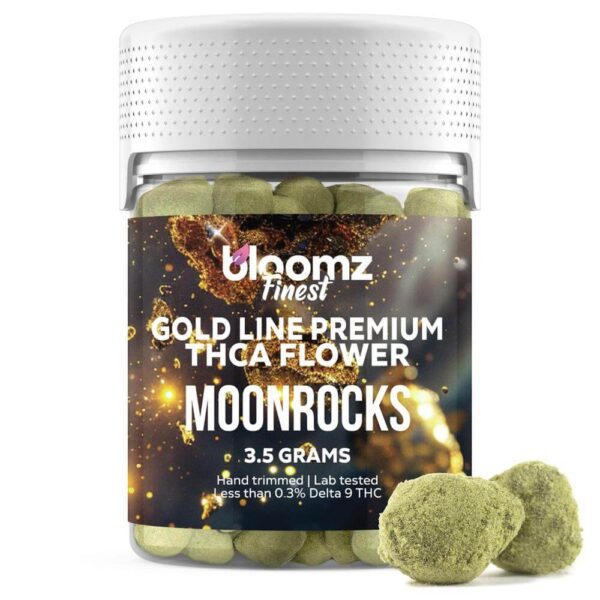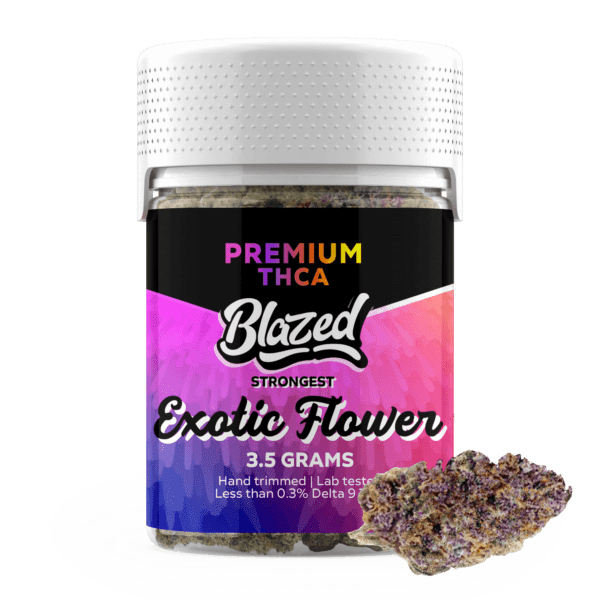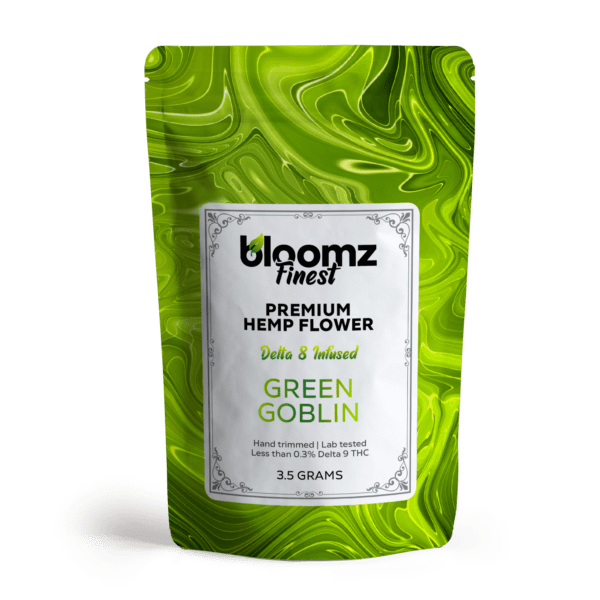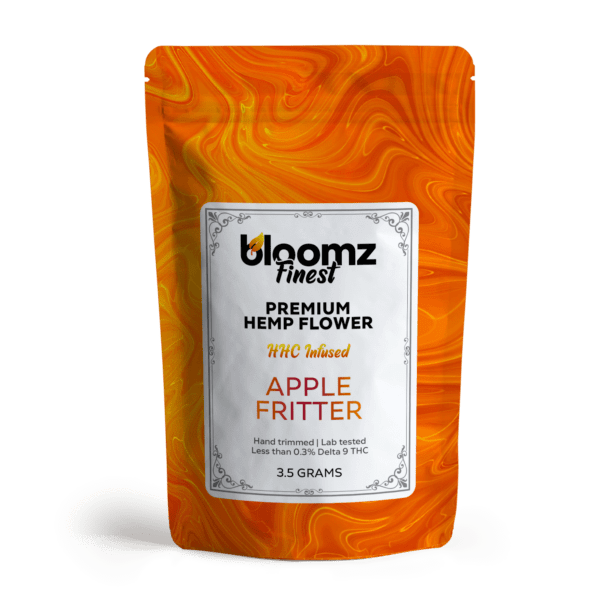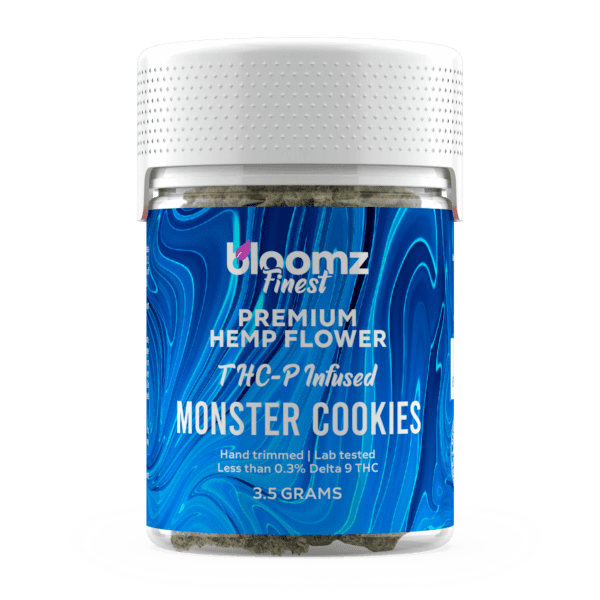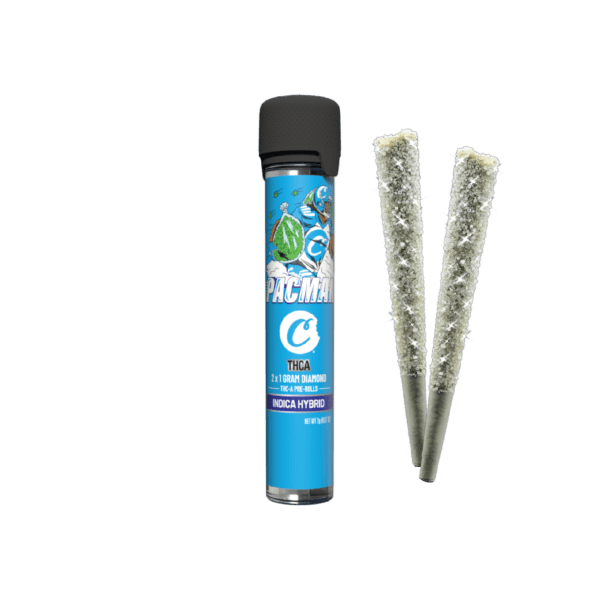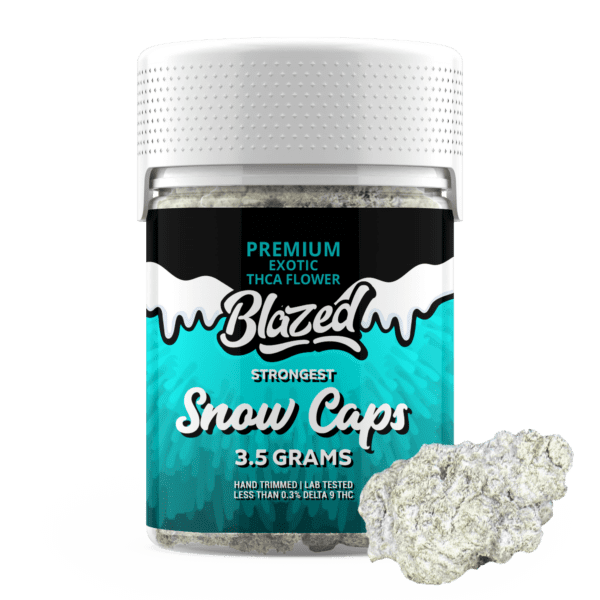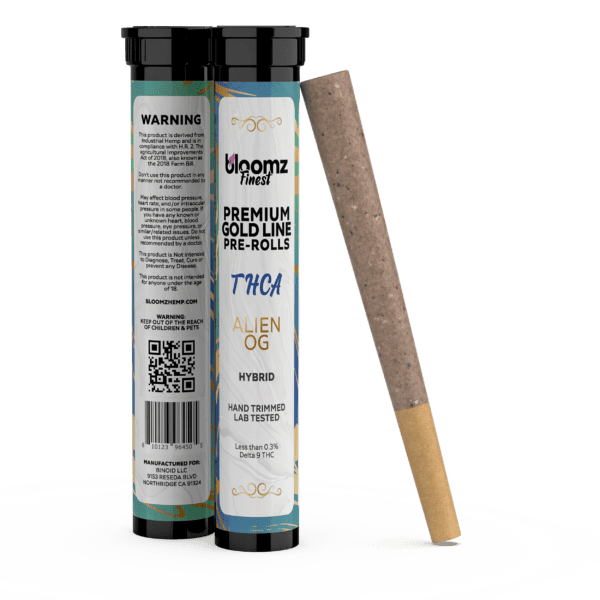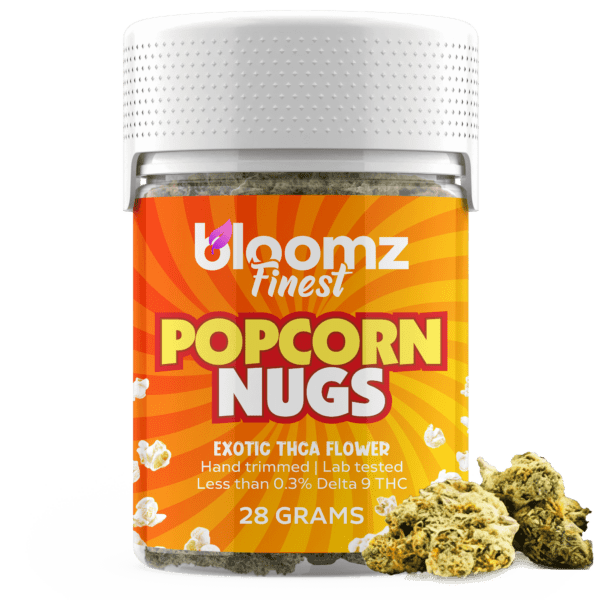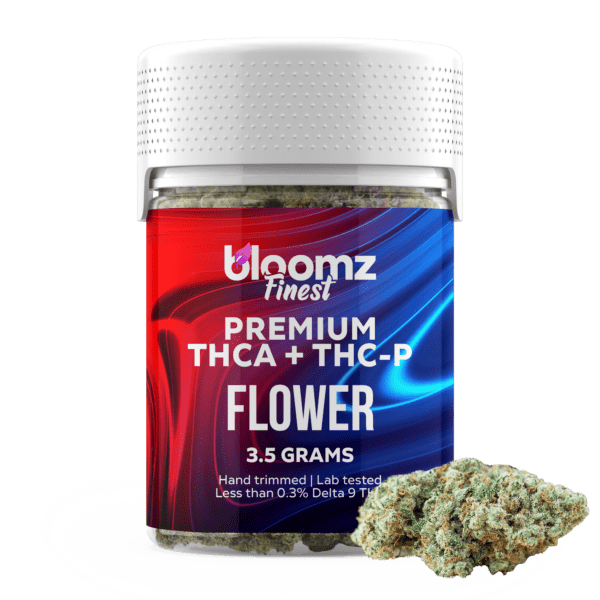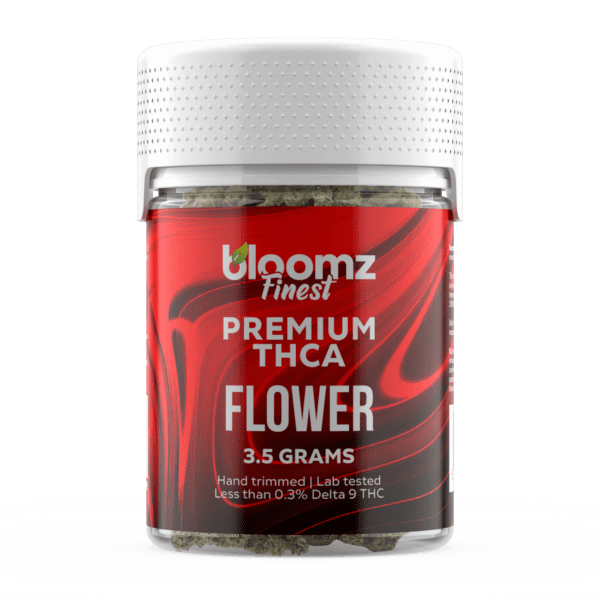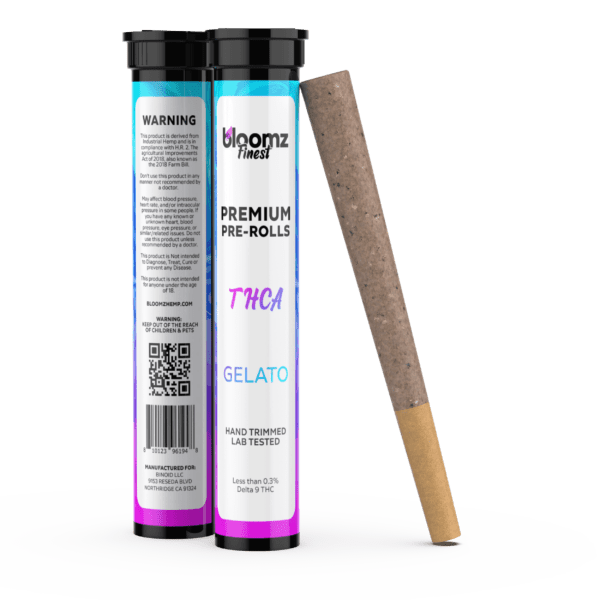In the expansive and ever-evolving landscape of personal wellness and enjoyment, a fascinating dichotomy presents itself to the modern consumer. It is a choice that mirrors a fundamental culinary decision: do you prefer the raw, vibrant potential of a fresh, farm-to-table ingredient, or the comforting, nostalgic satisfaction of a skillfully crafted, ready-to-eat dish?
This very question lies at the heart of the comparison between the crystalline, aromatic allure of THCA flower and the familiar, delicious appeal of pre-made, wellness-intended baked goods. On one hand, the flower offers a direct, elemental connection to a botanical source, a hands-on experience steeped in ritual and sensory exploration.
On the other, a warm brownie or a perfectly baked cookie provides a sense of comforting simplicity and culinary delight, delivering its properties in a form that has been cherished for generations. Navigating this choice is about more than just selecting a product; it is about defining the kind of experience you wish to have, curating a moment that aligns perfectly with your lifestyle, your palate, and your personal path to relaxation.
To Buy THCA Flower Click Here
Recommended products
-
THCA Flower – Indoor Exotics – Gold Line
$37.99$69.99 -
THCA Flower – Platinum Line
$49.99$79.99 -
THCA Flower – Mystery Reserve
$41.99$79.99 -
THCA Smalls
$149.99$256.99
Why It’s Important to Breakdown the Matchup of THCA Flower vs. Wellness-Intended Pre-Made Baked Goods
In an era where consumer options are virtually limitless, a meticulous breakdown of two profoundly different yet equally popular formats like THCA flower and wellness-oriented baked goods is not merely an academic exercise—it is an essential guide for informed decision-making. The modern marketplace is a bustling crossroads of tradition and innovation, where the raw, unprocessed plant sits on the shelf right next to a professionally crafted culinary creation. By dissecting the unique attributes of each, from their method of consumption and ingredient philosophy to their lifestyle compatibility and the very nature of the experience they provide, we can illuminate the path for the consumer.
This detailed comparison aims to replace ambiguity with understanding, empowering individuals to select a product that truly harmonizes with their personal preferences, desired outcomes, and daily routines:
Fundamentally Different Experiential Pathways: The core distinction between flower and baked goods lies in the way they are introduced to the body, a difference that dictates the entire timeline and character of the experience. THCA flower is consumed almost exclusively via inhalation. When smoked or vaporized, its active compounds are aerosolized and absorbed rapidly by the vast surface area of the lungs, entering the bloodstream almost instantaneously. This results in a very fast onset of effects, often within minutes, which allows for immediate feedback and the ability to self-regulate or titrate one’s dose with precision. In stark contrast, baked goods, like all edibles, must undertake a long journey through the digestive system. This process of digestion and subsequent first-pass metabolism in the liver can delay the onset of effects for anywhere from 45 minutes to over two hours. However, this metabolic transformation often creates a different, more powerful set of compounds, leading to an experience that is significantly longer in duration and often perceived as deeper and more body-centric.
The Ritual of Preparation vs. The Comfort of Immediacy: How a product integrates into one’s life is a critical factor in its long-term appeal. THCA flower is intrinsically linked to a process, a hands-on ritual that many users find meditative and enjoyable. It involves selecting a bud, the tactile act of grinding it, and the deliberate process of packing a bowl or rolling a joint. This requires time, space, and a certain degree of privacy, making it an experience often reserved for the home. Pre-made baked goods are the epitome of convenience and comfort. There is no preparation, no paraphernalia, and no process other than unwrapping and enjoying. This seamless, “ready-when-you-are” nature allows for effortless integration into almost any lifestyle, offering a familiar, discreet, and comforting way to partake without any of the associated rituals or odors of flower.
A Tale of Two Ingredient Lists: The Single vs. The Recipe: This comparison highlights a profound difference in product philosophy: the raw ingredient versus the finished recipe. High-quality THCA flower is a singular product. It is one thing—a dried, cured plant. This appeals to purists who value transparency and a direct connection to the botanical source, free from any additives. A pre-made baked good, by its very nature, is a complex formulation. A brownie is not just its active ingredient; it is also flour, sugar, butter, eggs, cocoa, and vanilla. While this makes for a delicious experience, it also means the consumer is partaking in a full culinary recipe, which comes with considerations regarding calories, sugar, fat, and potential allergens like gluten or dairy. This presents a choice between the simplicity of a single, natural ingredient and the decadent enjoyment of a multi-ingredient culinary creation.
Navigating the Nuances of Legality and Dosing: While both products can fall under the umbrella of the 2018 Farm Bill, their physical forms create different legal and practical realities. THCA flower’s legality hinges on its Delta 9 THC concentration being below 0.3% of its dry weight. For baked goods infused with hemp-derived cannabinoids, the same rule applies, but the math works out very differently. Because a brownie or cookie is much heavier and denser than a gram of flower, it can legally contain a significantly higher total milligram amount of Delta 9 THC while still remaining below the 0.3% threshold. This legal nuance allows for the creation of much more potent single-serving edibles. This also impacts dosing; while flower allows for puff-by-puff titration, accurately dosing a baked good can be challenging. The common advice to “eat half a brownie and wait” is inherently imprecise and can be difficult for consumers to manage consistently.
The Connoisseur’s Plant vs. The Universal Comfort Food: Ultimately, the intent behind the choice often differs. THCA flower appeals strongly to the botanical connoisseur—the individual who appreciates the subtle differences in aroma between strains, the visual beauty of a well-grown bud, and the nuanced spectrum of effects produced by different terpene profiles. It is an experience of exploration and appreciation for the plant itself. Wellness-intended baked goods tap into a more universal desire for comfort and familiarity. The act of eating a cookie or brownie is emotionally resonant for almost everyone, associated with warmth, nostalgia, and simple pleasure. For many, this makes baked goods a more approachable, less intimidating, and emotionally satisfying vehicle for wellness ingredients, prioritizing the enjoyment of the food experience as much as the effects of its active components.
Contender #1: THCA Flower
Emerging as a luminary in the contemporary hemp marketplace, THCA flower stands as a testament to the elegant harmony between natural botany, advanced agricultural science, and clever legal navigation. It has captivated a broad audience, from lifelong cannabis aficionados to curious individuals just beginning their journey, by offering an experience that feels both timelessly authentic and refreshingly modern. At its heart, THCA flower is the raw, unadulterated bud of the cannabis plant, meticulously cultivated to preserve its natural chemical state and bursting with potential.
It is akin to a raw cacao bean or an unroasted coffee bean—an organic product holding a wealth of complexity that is only fully expressed through the transformative power of heat. For a growing number of enthusiasts, its primary allure is this very purity and potential, offering a direct, tangible link to the soil it came from, rich with aromatic terpenes and a full spectrum of cannabinoids, waiting to be unlocked. To engage with THCA flower is to choose a path of active participation, a hands-on journey that values the process as much as the destination.
Before one can truly appreciate THCA flower, it is essential to understand the molecule that gives it its name: Tetrahydrocannabinolic acid (THCA) – the direct acidic precursor to the renowned Delta 9 THC. Within the intricate biology of a living, growing cannabis plant, the vast majority of cannabinoids exist in these raw, acidic forms, not in their “active” states. THCA is typically the most plentiful cannabinoid found in high-THC cannabis varieties. The key difference between a molecule of THCA and a molecule of Delta 9 THC is the presence of an additional carboxyl group (a cluster of carbon, oxygen, and hydrogen atoms).
This seemingly minor appendage has a major functional consequence: it physically alters the molecule’s three-dimensional shape, preventing it from binding effectively with the CB1 receptors of the human endocannabinoid system (ECS). This specific receptor interaction is the primary mechanism behind the euphoric and psychoactive effects associated with THC. Consequently, consuming THCA in its raw, unheated form is a non-intoxicating experience. The magic happens through a chemical reaction called “decarboxylation”, where the application of heat removes that extra carboxyl group, instantly transforming the inert THCA into the well-known and powerfully active Delta 9 THC.
With that scientific foundation, we can define THCA flower with clarity, as it’s quite simply, cannabis flower that has been selectively bred and cultivated to produce a very high concentration of THCA while simultaneously ensuring that its concentration of active Delta 9 THC remains at or below the federally mandated 0.3% threshold by dry weight. To the naked eye, as well as to the nose and the touch, this flower is indistinguishable from its high-Delta 9 THC cannabis counterpart. It showcases the same range of vibrant colors, dense bud structures, sticky trichome coatings, and complex aromas because, from a botanical standpoint, it is the exact same species, Cannabis sativa L.
Recommended products
The distinction lies purely in its chemotype—its specific cannabinoid profile—which is a result of masterful genetic selection and a meticulous post-harvest protocol designed to protect the delicate THCA molecule from premature conversion. The creation of this premium, compliant flower is a sophisticated blend of art and science, a multi-stage process where each step is critical to the quality of the final product:
Curating the Genetic Blueprint: The entire endeavor starts with genetics. Expert breeders dedicate themselves to identifying, isolating, and stabilizing cannabis cultivars that are naturally predisposed to producing abundant THCA while expressing minimal levels of Delta 9 THC. This is a painstaking process of phenotype hunting and generational cross-breeding to lock in these desirable genetic markers. The objective is to develop a stable, vigorous plant that not only adheres to legal standards but also produces the aesthetic and aromatic qualities consumers cherish: a rich and unique terpene profile, a dense and visually appealing bud structure, and a prolific coating of cannabinoid-rich trichomes.
Nurturing in Controlled Environments: Once the elite genetics are secured, the cultivation process begins in highly controlled environments. While outdoor cultivation is possible, indoor facilities and light-assisted greenhouses are the preferred methods for producing high-grade THCA flower. These environments grant the grower god-like control over every environmental variable—from the intensity and spectrum of the light and the precise nutrient formulas to the ambient temperature, humidity, and CO2 levels. This meticulous management minimizes plant stress and allows the cultivators to steer the plant’s energy toward maximizing the production of valuable terpenes and cannabinoids, ensuring a potent and consistent crop.
The Art of the Perfect Harvest: The timing of the harvest is a critical decision that can make or break the quality of the entire crop. Growers do not rely on a calendar; instead, they rely on microscopic observation. Using magnifying loupes or digital microscopes, they closely inspect the trichomes—the tiny, mushroom-shaped glands on the flower’s surface where cannabinoids are synthesized and stored. The ideal moment to harvest is when a majority of these trichomes have transitioned from clear to a milky or cloudy white, which signals the absolute peak concentration of THCA. Harvesting even a few days too early or too late can result in a significant drop in potency and flavor.
The Patient Craft of Drying and Curing: This post-harvest stage is arguably the most important for defining the flower’s final quality, smoothness, and stability. Immediately after harvest, the plants are hung to dry in a completely dark, climate-controlled room with specific temperature (around 60-70°F) and humidity (around 55-65% RH) parameters for 7 to 14 days. This slow and gentle drying process is crucial for preserving the volatile terpenes. After drying, the trimmed buds are sealed in airtight containers for the curing process, which can last anywhere from three weeks to several months. During this time, the containers are regularly opened, or “burped,” to exchange gasses and regulate moisture. This patient process not only breaks down residual chlorophyll for a smoother smoke but is absolutely vital for preventing the degradation of THCA into Delta 9 THC, thus ensuring the final product remains legally compliant.
Validation Through Third-Party Testing: The final and non-negotiable step before the flower can be packaged for sale is independent laboratory testing. A representative sample from each and every harvest batch is sent to an accredited third-party lab for a full-panel analysis. The resulting document, the Certificate of Analysis (COA), provides an unbiased, detailed report of the flower’s cannabinoid profile. It serves as the ultimate proof of compliance, verifying that the Delta 9 THC level is below the 0.3% legal limit. The COA also quantifies the high percentage of THCA and other cannabinoids, and often includes a terpene analysis, offering complete transparency and empowering the consumer with all the necessary information to make a confident purchase.
The market for THCA flower is a rich and diverse ecosystem, offering a surprisingly broad spectrum of categories and product types to suit every level of consumer, from the budget-conscious beginner to the most discerning connoisseur. This variety is a direct reflection of the sophistication of modern cultivation practices and post-harvest processing techniques, which allow for the creation of everything from sun-grown, natural buds to potent, artisanally enhanced creations. Understanding the distinctions between these different categories is the key to successfully navigating the marketplace and selecting a product that perfectly aligns with one’s personal preferences for quality, potency, convenience, and overall experience:
Indoor THCA Flower: Often regarded as the pinnacle of cannabis cultivation, indoor-grown flower is nurtured in a completely controlled, sealed environment. Every single input—from the precise spectrum and schedule of the LED or HPS lights to the intricate feeding regimen of nutrients—is managed with scientific precision. This meticulous oversight results in a product of exceptional quality and consistency. Indoor-grown buds are renowned for their stunning “bag appeal,” characterized by a dense, tight structure, vibrant hues of green and purple, and a shimmering, frosty layer of cannabinoid-packed trichomes. The sealed environment also protects the highly volatile terpenes from evaporating, leading to an incredibly pungent and complex aroma and a rich, true-to-strain flavor. Though it commands the highest price, its unparalleled quality makes it the top choice for enthusiasts.
Outdoor THCA Flower: Cultivated in open fields under the power of natural sunlight, outdoor flower offers a completely different, yet equally valid, appeal. Growing outdoors allows plants to reach their full genetic potential in terms of size, often resulting in massive yields that make this category a more affordable option. Advocates for “sun-grown” flower believe that the full, natural spectrum of sunlight fosters a more complex and robust development of cannabinoids and terpenes, a quality often attributed to the concept of terroir, where the unique combination of soil, climate, and sun of a specific location imparts distinctive characteristics to the plant. While outdoor buds may be less cosmetically perfect and a bit more “leafy” or less dense than indoor flower, they can provide a wonderfully natural and potent experience.
THCA Smalls: An excellent choice for the value-oriented consumer, “smalls” are not a different quality of flower, but simply a different size. These are the smaller, popcorn-sized buds that typically grow on the lower branches of the cannabis plant, where they receive less direct light than the top colas. As a result, they don’t grow as large or dense, but they come from the exact same premium plants as the larger nugs and therefore possess the same genetic profile, potency, and aroma. During the post-harvest trimming and sorting process, these smaller buds are separated out and sold at a lower price point, offering a fantastic way to enjoy top-shelf quality without the top-shelf price tag.
THCA Nugs: The term “nug” is common slang for an individual, manicured bud of cannabis flower. When a product is marketed simply as THCA nugs, it is referring to the standard, prime flowers from the harvest. These are the A-grade buds that are of a desirable size and structure, representing the main product of a grower’s efforts. They are what most people picture when they think of high-quality cannabis flower, prized for their density, visual appeal, and heavy trichome coverage.
THCA Snowballs/Snow Caps: This is a specialized, high-potency product designed for users seeking a significantly intensified experience. The creation of a “snowball” begins with a premium nug of high-quality THCA flower. This bud is then carefully coated, often by misting it with a sticky, hemp-derived liquid, and then generously dusted or rolled in a layer of pure THCA isolate. This isolate is a fine, white, crystalline powder that is nearly 99%+ pure THCA. The end result is a stunningly white bud that looks like it has been dipped in snow, with a THCA percentage that is dramatically boosted far beyond what any natural flower could achieve on its own.
THCA Moonrocks: Taking the concept of enhancement to an even higher echelon, THCA moonrocks are a true composite of cannabis craftsmanship, combining three distinct product types into one incredibly potent package. The process starts with a solid nug of THCA flower, which is then fully submerged in a warm, viscous cannabis concentrate, like a high-purity distillate. While this sticky coating is still wet, the entire bud is then rolled in a thick blanket of kief, which is the collection of pure, unadulterated trichome heads that have been sifted from cannabis flower. This triple-layered creation is dense, burns very slowly, and boasts an astronomical potency level that makes it suitable only for experienced users.
THCA Pre-Rolls, Blunts & Joints: Catering to the universal demand for convenience, pre-packaged options offer a ready-to-use solution. THCA pre-rolls consist of ground THCA flower that has been professionally loaded into cones or rolling papers (joints) or, for a slower-burning experience, into robust hemp wraps (blunts). This removes the need for the consumer to own or carry a grinder, papers, or possess the skill and time required to roll their own. They provide a simple, portable, and shareable format for enjoying THCA flower without any of the associated preparation, making them a perfect choice for social gatherings or for users who value straightforward simplicity.
Exotic THCA Flower: In the cannabis lexicon, the term “exotic” refers to strains that are exceptionally rare, genetically unique, or represent the cutting edge of cannabis breeding. These are often boutique, small-batch strains that boast highly desirable and unusual characteristics, such as striking color patterns (deep purples, vibrant pinks, near-black hues), novel and complex aroma profiles that go beyond the typical scent categories (smelling like candy, baked goods, or funky cheeses), and unique bud structures. Exotic strains are the “haute couture” of the flower world, coveted by connoisseurs for their novelty, elite genetics, and supreme quality.
AA Exotic THCA Flower: An informal but widely used grading system helps consumers navigate the quality spectrum of flower. AA-grade, also known as “dubs,” typically signifies a mid-tier product. While it can still be a perfectly enjoyable flower, it will likely exhibit some minor flaws compared to higher grades. The buds might be a bit less dense, the trim might not be as tight and clean, or the aroma might be more muted. AA represents a solid, budget-friendly option for everyday use.
AAA Exotic THCA Flower: Known colloquially as “trips” or “trips A,” this grade is the established benchmark for high-quality, top-shelf flower in the modern market. A AAA-grade flower will check all the important boxes: it will be visually attractive with dense, well-formed buds that have good trichome coverage. The aroma will be robust and true to the strain’s genetic heritage, and the consumption experience will be smooth, flavorful, and potent. The vast majority of flower sold by reputable retailers falls into this widely recognized tier of excellence.
AAAA Exotic THCA Flower: Representing the absolute apex of quality, AAAA or “quads” is a designation reserved for truly flawless, craft-level cannabis. This is the cream of the crop, a flower that excels in every conceivable metric. AAAA buds are perfectly cured, impeccably manicured, and so thoroughly blanketed in trichomes that they can appear white or silvery. The aroma is exceptionally pungent, complex, and “loud”—often permeating a room the moment the container is opened. The flavor is rich and pronounced, and the experience is supremely smooth and potent. This is the connoisseur’s choice, representing the highest possible expression of a strain’s potential.
The rich tapestry of cannabis genetics is traditionally woven into three primary classifications: Indica, Sativa, and Hybrid. These categories have long served as a foundational framework for consumers, providing a shorthand to describe a strain’s ancestry, its typical growth patterns, and, most importantly, the general type of experience it is likely to foster. While modern cannabis science has revealed that a strain’s specific terpene profile is often a more precise indicator of its effects than its lineage alone, these three classifications remain an invaluable and universally understood tool for navigating the vast library of THCA flower options.
Selecting a strain is an act of curating a specific mood or enhancing an activity, and understanding these fundamental types is the essential first step in that personalized process:
Indica: Indica strains trace their genetic heritage back to the rugged, high-altitude, and often harsh climates of the Hindu Kush mountain range in the Middle East. As an adaptation to this environment, the plants evolved to be short, dense, and bushy, with wide, dark green leaves. In the world of effects, Indica strains are universally associated with deep, profound feelings of physical relaxation and bodily ease. The experience is often described as a “body high” or being “in-da-couch,” characterized by a sense of calming, tranquil heaviness that can feel as though it is soothing muscles and releasing tension. Due to these powerfully relaxing characteristics, Indica-dominant strains are the overwhelming choice for evening or nighttime use. They are perfectly suited for unwinding after a stressful day, sinking into a comfortable movie-watching session, or preparing the body and mind for a peaceful night’s rest. Common terpenes found in these strains include myrcene, which has a musky, earthy scent and is believed to contribute to the sedative feeling, and linalool, known for its floral, lavender-like aroma. Iconic examples of classic Indica strains include OG Kush, Northern Lights, and Granddaddy Purple.
Sativa: In contrast, Sativa strains evolved in the warm, humid, and sun-drenched equatorial regions of the globe, such as Southeast Asia, Central America, and Africa. Their evolutionary response to this climate was to grow tall, slender, and lanky, with narrow, light-green leaves that allow for better airflow and light penetration. The effects commonly attributed to Sativa strains are often considered the polar opposite of Indicas. They are celebrated for producing an uplifting, energizing, and cerebral experience that stimulates the mind more than it relaxes the body. Users frequently report feelings of heightened creativity, sharpened focus, increased motivation, and an elevated, cheerful mood, which can make them more sociable and talkative. This makes Sativas a popular choice for daytime activities, creative pursuits like writing or painting, outdoor adventures, or any social situation where a boost of vibrant, positive energy is welcome. The terpene profiles of Sativas often feature high levels of limonene, which provides a zesty citrus aroma, and pinene, which has a fresh, invigorating scent of pine. Legendary Sativa strains include Sour Diesel, Jack Herer, and Green Crack.
Hybrid: In today’s highly sophisticated world of cannabis breeding, a pure, 100% Indica or Sativa strain is actually quite rare. The vast majority of the strains available on the market today are technically Hybrids. These are cultivars that have been created by intentionally cross-breeding Indica and Sativa plants to produce offspring that inherit a combination of traits from both parent lineages. The art and science of creating a Hybrid is to capture the most desirable characteristics from different strains and combine them into one superior plant. This could mean breeding the potent body relaxation of an Indica with the creative mental stimulation of a Sativa, or breeding for a specific exotic flavor profile or a particularly high yield. Hybrids can be Indica-dominant, Sativa-dominant, or a perfectly balanced “50/50” mix, and they offer the broadest and most nuanced range of effects possible. This incredible versatility is what makes them so immensely popular, as they can be tailored to suit almost any preference, time of day, or desired activity. Famous Hybrids like GG4 (an Indica-dominant hybrid known for its powerful euphoria) and Blue Dream (a Sativa-dominant hybrid known for its gentle balance of mental uplift and physical ease) showcase the incredible spectrum of experiences that Hybrid genetics can offer.
The legality of THCA flower in the United States is a topic of great interest and considerable nuance, born directly from the precise wording of the 2018 Agriculture Improvement Act, more commonly known as the Farm Bill. This pivotal federal law officially removed hemp and its derivatives from the list of controlled substances and established a clear legal distinction between hemp and marijuana.
The definition of legal hemp was set as any part of the Cannabis sativa L. plant that contains a Delta 9 Tetrahydrocannabinol (Delta 9 THC) concentration of no more than 0.3 percent on a dry weight basis. This distinction is the linchpin of the entire industry. The law specifically identifies and regulates Delta 9 THC. Since THCA flower is carefully cultivated to have very high levels of Tetrahydrocannabinolic acid (THCA) but compliant, trace levels of Delta 9 THC, it meets the federal definition of legal hemp. This legal framework has permitted the cultivation, sale, and possession of THCA flower in many areas across the United States.
However, the legal landscape is not uniform and continues to evolve. Some states have enacted their own, more stringent regulations that use a “total THC” standard for compliance. This standard calculates the total potential THC by adding the Delta 9 THC content to the potential Delta 9 THC that could be created from the THCA in the plant (a value calculated as THCA % x 0.877). In states that have adopted this total THC rule, high-THCA flower is often considered illegal, regardless of its compliant Delta 9 THC level. This creates a complex patchwork of laws, making it absolutely essential for consumers to research and understand the specific statutes governing hemp products in their own state or municipality before making a purchase.
The remarkable versatility of THCA flower stands as one of its most compelling features, granting users the freedom to choose a consumption method that best suits their personal preferences, available tools, and the specific experience they wish to cultivate. The essential key to unlocking the flower’s potential is the application of heat, which initiates the critical process of decarboxylation that converts the non-intoxicating THCA into the active Delta 9 THC. This transformation can be achieved rapidly through the high heat of combustion or vaporization, or it can be done more slowly and deliberately in an oven to prepare the flower for culinary use.
Each of these methods offers a distinctly different user experience in terms of flavor, smoothness, onset time, and the duration of effects, providing consumers with an exceptional degree of control over their botanical journey:
Vaping (using a portable or desktop vaporizer): Vaporizing has surged in popularity as a more refined and health-conscious alternative to traditional smoking. A vaporizer is a device that heats the ground THCA flower to a very precise temperature—hot enough to trigger decarboxylation and turn the plant’s essential oils, which contain the cannabinoids and terpenes, into an inhalable vapor, but cool enough to avoid combustion (burning). This crucial distinction is the source of its primary benefits. By not burning the plant matter, vaping produces a vapor that is significantly smoother, cooler, and less harsh on the throat and lungs. Furthermore, because many of the delicate and flavorful terpenes are preserved at these lower temperatures, vaporizing allows the user to experience the full, complex, and nuanced flavor profile of their chosen strain in a way that smoking cannot replicate. Portable vaporizers offer unparalleled convenience and discretion for on-the-go use, while larger desktop vaporizers can produce even denser, more flavorful, and more potent vapor for an exceptional at-home experience.
Smoking: This remains the most traditional, iconic, and widely practiced method of consuming cannabis flower. The process involves the direct combustion of the plant material and the inhalation of the resulting smoke. This can be accomplished with a wide array of tools and accessories, ranging from simple glass pipes and water pipes (more commonly known as bongs, which use water to cool and filter the smoke) to hand-rolling the ground flower into a paper-wrapped joint or a larger, slower-burning hemp-wrapped blunt. Smoking provides the most immediate onset of effects, a quality that many users value for its instant feedback and the simple, time-honored ritual it represents. The intense heat of combustion, however, does destroy a portion of the delicate cannabinoids and terpenes, which can alter the overall flavor and efficiency compared to vaping. Despite this, the simplicity, accessibility, and powerful effects of smoking ensure its enduring popularity.
Cooking/Baking: For individuals who wish to completely avoid any form of inhalation, THCA flower serves as the raw ingredient for creating potent, long-lasting, and delicious homemade edibles. This method, however, requires a critical preliminary step that cannot be skipped. One cannot simply add raw flower to a recipe and expect results. The flower must first be activated through decarboxylation. This is typically done by finely grinding the flower, spreading it evenly on a baking sheet, and baking it in an oven at a low temperature (usually between 220-240°F or 105-115°C) for approximately 30 to 45 minutes. This gentle heating converts the THCA into Delta 9 THC. Once activated, the decarboxylated flower is then simmered in a fat source, such as butter or coconut oil, to infuse the fat with the active cannabinoids. This resulting “cannabutter” or infused oil can then be used as a direct replacement for regular butter or oil in virtually any recipe, from classic brownies and cookies to savory dishes like pasta sauces or salad dressings.
The spectrum of effects produced by THCA flower is entirely dependent on its transformation through heat. If one were to consume the flower in its raw state, such as by adding it to a smoothie, it would remain largely non-intoxicating, as the THCA molecule in its natural form does not efficiently interact with the body’s cannabinoid receptors. The entire euphoric and relaxing experience that users seek is unlocked exclusively through the process of decarboxylation.
When the flower is heated via smoking, vaping, or baking, the THCA is converted into Delta 9 THC, the celebrated compound known for its ability to elicit profound feelings of bliss, euphoria, and deep-seated relaxation. Once this newly formed Delta 9 THC is absorbed into the bloodstream, it travels to the brain and interacts with the endocannabinoid system, particularly the CB1 receptors, initiating a cascade of potential effects on both mind and body.
Users may find themselves experiencing a significant shift in their perception of time and sensory input, a heightened appreciation for music and art, a surge of creative and abstract thoughts, or a gentle wave of physical tranquility that seems to melt away tension. The precise nature and intensity of this experience is remarkably variable, influenced by a complex interplay of factors including the specific strain’s unique cannabinoid and terpene profile (the entourage effect), the user’s individual body chemistry and tolerance level, the amount consumed, and the chosen method of consumption.
Pros & Cons
Every product, regardless of its benefits, comes with a unique profile of advantages and disadvantages. THCA flower is no exception. Its pros often revolve around its natural form, versatility, and the level of control it affords the user, while its cons are typically related to practical considerations like convenience, discretion, and the method of consumption. A thoughtful consideration of these points is essential when determining if it is the ideal choice for one’s personal needs.
Pros:
An Unadulterated, Single-Ingredient Product: A primary advantage of THCA flower is its purity and simplicity. It is, at its core, a single-ingredient agricultural product, free from the sugars, binding agents, preservatives, and artificial flavors found in formulated edibles. This appeals deeply to individuals who follow a clean-living philosophy and prefer to consume products in their most natural and unprocessed state, offering a direct, unadulterated connection to the botanical source.
Experiencing the Full-Spectrum “Entourage Effect”: Unlike products made with isolated cannabinoids, THCA flower delivers a complete, naturally occurring symphony of compounds. This includes a wide range of minor cannabinoids (like CBGA, CBCA), flavonoids, and a rich profile of aromatic terpenes. This allows the user to experience the “entourage effect,” a widely accepted theory that all these compounds work in synergy to modulate and enhance the overall experience, creating a more holistic, nuanced, and well-rounded effect than any single compound could achieve alone.
Near-Instantaneous Onset of Effects: When THCA flower is consumed via inhalation (smoking or vaping), the onset of effects is incredibly rapid, typically being felt within just a few minutes. This immediacy provides instant feedback, which is highly beneficial for both new and experienced users. It allows for precise dose titration, as one can take a small puff, wait a few minutes to gauge the effects, and then decide whether to consume more, making it much easier to find one’s perfect dose and avoid overconsumption.
Unparalleled Control Over the Session: Flower offers a granular level of control over the consumption experience that is unmatched by edibles. The user has complete authority over the amount used, from a tiny “one-hitter” to a fully packed bowl. The ability to manage the experience puff-by-puff provides an in-the-moment responsiveness that allows users to dial in a very specific and desired level of effect with remarkable precision.
A Rich and Engaging Sensory Journey: The use of high-quality THCA flower is a multi-sensory experience. It begins with the visual beauty of a well-cured, trichome-covered bud and the tactile pleasure of breaking it apart. Most importantly, the diverse world of terpenes creates a vast spectrum of complex aromas and flavors, from pungent diesel and zesty citrus to sweet berry and earthy pine. For many enthusiasts, this aromatic and gustatory exploration is a central and highly cherished part of the overall ritual.
Exceptional Versatility of Use: The same batch of THCA flower can be used in a multitude of ways to suit the user’s mood or circumstance. It can be vaporized for a smooth, clean, and flavor-forward session, smoked in a pipe or joint for a more traditional and potent ritual, or it can be decarboxylated and infused into fats like butter or oil to create a batch of long-lasting homemade edibles, offering a completely smoke-free option.
Broad Accessibility Due to Federal Law: Because of its specific chemical makeup—high in THCA but containing a Delta 9 THC level below the 0.3% federal threshold—THCA flower is legally classified as hemp under the 2018 Farm Bill. This unique legal status makes high-quality, potent cannabis flower accessible to a much broader population of adults in many states where traditional, high-Delta 9 THC cannabis remains prohibited.
The Ability to Curate Effects with Strain Selection: The vast library of available cannabis strains is a major benefit for users of flower. One can intentionally select a specific strain to align with a desired activity or mood. Whether seeking the energizing and uplifting feelings of a Sativa for a creative project, the deep, body-melting relaxation of an Indica for a quiet evening, or the balanced, nuanced effects of a Hybrid, there is a strain to perfectly match the occasion.
The Meditative Pleasure of the Ritual: For a significant number of users, the process is as rewarding as the outcome itself. The deliberate, hands-on ritual of selecting a nug, the sound and feel of grinding the flower, and the careful act of packing a bowl or rolling a joint can be a form of mindfulness. This intentional process helps create a clear transition from the hustle of the day to a state of relaxation and presence.
Aesthetic Beauty and “Bag Appeal”: Beyond its effects, truly well-grown cannabis flower is a thing of beauty. “Bag appeal” is a term used to describe the immediate visual attractiveness of a sample of flower, encompassing its vibrant colors, dense structure, expert trim job, and frosty trichome coverage. This aesthetic quality, combined with the powerful and pleasant fragrance that greets you upon opening the container, creates a strong sense of appreciation for the skill and craft of the cultivator.
Cons:
Requires Ancillary Gear and Preparation: Consuming THCA flower is not a single-step action. It requires a collection of paraphernalia, which at a minimum usually includes a grinder and a consumption device such as a pipe, bong, or vaporizer, along with a lighter or power source. This necessity for additional equipment and the time needed for preparation can be a barrier to entry for some and a hassle for those seeking simplicity.
Produces a Pervasive and Distinctive Odor: The same terpenes that give flower its delightful aroma also produce a very strong, pungent, and unmistakable odor that lingers in the air and can cling to clothes and furniture. This profound lack of discretion is a significant drawback for anyone living in shared spaces like apartments, with roommates or family, or in any situation where privacy and subtlety are paramount concerns.
Inhalation May Pose Respiratory Concerns: The most common and effective ways to use flower involve inhaling its vapor or smoke directly into the lungs. While vaping is generally considered a less harmful alternative, the act of smoking involves combusting plant material, which creates tar and other byproducts. For individuals with respiratory sensitivities or those who simply wish to avoid inhalation for long-term health reasons, this is a major disadvantage.
Inherent Difficulty in Precise Milligram Dosing: While inhaling THCA flower allows for excellent real-time control, it is nearly impossible to measure a precise, quantifiable dose in milligrams. The potency can fluctuate slightly from one part of a bud to another, and there is no practical way to determine exactly how many milligrams of cannabinoids are consumed in a single inhalation. This lack of quantitative precision can be a significant con for users who require or prefer consistent, repeatable, and measurable dosing for their wellness regimen.
Contender #2: Pre-Made Baked Goods
Entering the arena as a bastion of comfort, familiarity, and timeless culinary delight, wellness-intended pre-made baked goods represent one of the most traditional, beloved, and emotionally resonant forms of edibles. These carefully crafted creations—from decadent, fudgy brownies and soft, chewy cookies to rich blondies and nostalgic cereal treats—tap into a deep well of sensory pleasure and positive association, transforming the act of engaging with wellness ingredients into a genuinely enjoyable and satisfying indulgence.
They stand in stark contrast to the raw, botanical nature of flower, offering instead a finished, skillfully crafted product that requires no preparation, knowledge, or effort on the part of the consumer. The appeal of a baked good is universal and immediate; it is less about a complex, hands-on ritual and more about the simple, satisfying, and comforting pleasure of a delicious bite. In the modern wellness market, these timeless recipes have been reimagined and infused with a wide array of functional ingredients, firmly establishing baked goods as a potent, exceptionally long-lasting, and incredibly approachable option for consumers of all backgrounds and experience levels.
At their essence, wellness-intended pre-made baked goods are ready-to-eat culinary products, crafted using traditional baking techniques, that have been infused with specific active ingredients for a targeted purpose. This category is wonderfully broad, encompassing a familiar and comforting variety of treats. It includes dense, chocolate-laden brownies; their vanilla and brown-sugar-based cousins, blondies; cookies of all imaginable types from chocolate chip to oatmeal raisin; crispy and chewy cereal treats; single-serving cakes and cupcakes; and even an emerging market of savory options like infused crackers or pretzels.
What distinguishes them from their conventional bakery counterparts is the precise addition of functional ingredients. The “pre-made” aspect is absolutely central to their value proposition. They are produced in commercial kitchens and bakeries that adhere to stringent food safety and quality control standards, are tested for consistency and potency, and are then individually packaged to preserve freshness and ensure a reliable experience. This commercial preparation eliminates any need for the consumer to possess baking skills, source specialized ingredients, or dedicate the significant time required for accurate and effective home infusion, offering instead the ultimate in comforting convenience.
The creation of a high-quality, consistently dosed, and delicious pre-made baked good is a masterful blend of culinary artistry and exacting scientific precision. This process takes place in commercial-grade bakeries where the art of the pastry chef meets the rigor of a laboratory technician. Every stage is carefully controlled to ensure that each individual item in a batch is not only safe and delicious but also contains the exact advertised dose of the active ingredient, a level of reliability that is crucial for consumer trust and a positive, predictable experience:
Sourcing Quality Culinary Ingredients: The foundation of any exceptional baked good is the quality of its base ingredients. The process begins with sourcing premium components: specific types of flour (like cake flour for a tender crumb or all-purpose for a chewier texture), high-quality sweeteners, and crucially, premium fats like European-style butter with a higher fat content for richer flavor, or refined coconut oil for vegan recipes. The quality of the flavorings, such as high-fat cocoa powder, pure vanilla extract, and fine-ground salt, also has a profound impact on the final product’s ability to be both effective and delicious.
Creating the Infused Base: This is the most critical step for dosage accuracy and efficacy. Rather than simply mixing a powdered ingredient into the batter, which would lead to inconsistent distribution, professionals first create an infused base. Typically, this is a fat like butter or oil. The active ingredient, such as a pure hemp-derived cannabinoid distillate, is carefully measured and then thoroughly homogenized into the melted fat. Because cannabinoids are nonpolar, they readily dissolve into lipids (fats), creating a stable and evenly saturated infusion that can be perfectly blended into the main recipe.
Precise Mixing and Batter Preparation: The now-infused butter or oil is then incorporated into the full recipe using precise measurements and specific culinary techniques. For example, in cookies, the “creaming method” might be used, where the infused fat and sugar are beaten together to incorporate air, which is essential for a light and tender final texture. The ingredients are mixed in large, industrial-grade mixers to create a perfectly uniform dough or batter, ensuring that the infused fat is evenly integrated and that any given portion of the batter contains a consistent amount of the active compound.
Portioning, Baking, and Dosing Control: The prepared batter or dough is then meticulously portioned. Automated depositors may place exactly sized pucks of cookie dough onto baking sheets, or an exact weight of brownie batter is spread into pans. The products are then baked under tightly controlled temperatures and times. The heat of the oven triggers crucial chemical reactions like caramelization of sugars and the Maillard reaction between amino acids and reducing sugars, which together create the deep, complex, and browned flavors that are characteristic of baked goods and are highly effective at masking any residual botanical flavors. The final dose of each item is determined by this precise portioning.
Cooling and Quality Assurance Testing: After baking, the goods must be properly and thoroughly cooled on racks before they can be packaged. This is a critical step that prevents condensation from forming in the package and allows the internal structure, or “crumb,” of the baked good to set properly. During this phase, representative samples are pulled from the batch and sent to a third-party laboratory. This lab conducts a full panel of tests, verifying not only the potency of the active ingredient but also screening for any potential microbial contaminants like yeast and mold, as well as food allergens, to ensure the product is completely safe for consumption.
Individual Wrapping and Final Packaging: Once the baked goods have passed quality control, they are individually wrapped and sealed. This is a crucial step for maintaining optimal freshness, preventing the product from going stale, and ensuring hygiene. These wrapped items are then placed into their final retail packaging, which may utilize advanced techniques like modified atmosphere packaging (MAP), where oxygen is removed and replaced with nitrogen to dramatically extend shelf life by preventing oxidation. The packaging is always clearly labeled with all necessary dosage, ingredient, and nutritional information.
Recommended products
The world of wellness-intended pre-made baked goods is wonderfully diverse, offering a comforting array of options that cater to different tastes, dietary needs, and desired experiences. The inherent versatility of baking allows for an almost endless variety of infused creations, from classic, indulgent treats to more health-conscious alternatives. This breadth of choice ensures that nearly everyone can find a baked good that resonates with their personal palate and wellness goals, making it one of the most accessible and enjoyable categories of edibles on the market.
This includes the iconic, rich, and fudgy brownies, whose intense chocolate flavor is a perfect medium for masking the taste of hemp extracts. Cookies offer incredible variety, from the timeless chocolate chip to oatmeal raisin and peanut butter. Cereal treats, made with a simple base of marshmallow and butter, are exceptionally easy to infuse and offer a light, chewy texture. Even cakes and cupcakes are available for a more celebratory experience. The market is also seeing a rise in savory options, like infused cheese crackers or pretzels, for those who don’t have a sweet tooth.
A significant and growing segment of the wellness market is dedicated to pre-made baked goods that are crafted not for psychoactive effects, but for their enhanced nutritional value. These products leverage the familiar and comforting format of baked goods to deliver beneficial vitamins and minerals, appealing to health-conscious consumers and those with specific dietary goals. This category can be broken down into two main approaches. The first is creating naturally vitamin-rich baked goods, which focuses on a “whole foods” philosophy. This involves using ingredients that are inherently packed with nutritional value. For example, muffins made with 100% whole grain flours are naturally rich in B vitamins and fiber, while adding banana provides potassium, or pumpkin puree provides a boost of Vitamin A.
The second approach is creating fortified baked goods. Fortification is the scientifically established process of intentionally adding micronutrients to staple foods. This practice has a long and successful history as a public health initiative to combat nutritional deficiencies. The most common example is the mandatory enrichment of refined white flour in the United States with a specific suite of B vitamins—thiamin, riboflavin, niacin, and folic acid—as well as iron. This means that many commercially available baked goods are, by default, contributing to the consumer’s daily intake of these essential nutrients.
The most prominent and rapidly growing category within wellness-intended baked goods is undoubtedly those infused with hemp-derived cannabinoids. These products have transformed the landscape, offering a delicious and powerful method for experiencing the wide range of effects these compounds can produce. The key to their creation lies in the infusion process. Because cannabinoids are fat-soluble (lipophilic), they must be infused into a fat source to be effectively distributed throughout a recipe and properly absorbed by the body.
This is typically achieved by creating “cannabutter” or an infused cooking oil (like coconut or MCT oil), where a cannabinoid extract or distillate is gently heated and bonded with the fat molecules. This infused fat then becomes the base for the entire recipe. The high fat content inherent in most baked goods like brownies and cookies not only makes them ideal vehicles for infusion but also may enhance the bioavailability of the cannabinoids, as fats help the body to absorb these compounds more efficiently through the digestive system. These baked goods can be infused with the full spectrum of cannabinoids available, from non-intoxicating CBD for general wellness to intoxicating options like Delta 8 THC and Farm Bill-compliant Delta 9 THC for profound euphoria and relaxation.
The overall effects of pre-made, infused baked goods are governed by the universal principles of oral ingestion and are often described as being the most profound and enveloping of any consumption method. The experience is characterized by a significantly delayed onset and a remarkably prolonged duration. After a baked good is consumed, it is essentially treated like any other food. It must first be mechanically and chemically broken down by acids and enzymes in the stomach, a process that can be influenced by the other foods present. The active ingredients are then absorbed through the lining of the small intestine and routed directly to the liver via the hepatic portal vein. It is in the liver that the critical process of “first-pass metabolism” occurs.
Here, a family of enzymes known as Cytochrome P450 goes to work, metabolizing the cannabinoids. A compound like Delta 9 THC is converted into a different, more powerful metabolite called 11-hydroxy-THC, which is particularly effective at crossing the blood-brain barrier. It is this potent metabolite that is largely responsible for the intense, long-lasting, and distinctly body-focused experience of edibles. This entire journey accounts for the delayed onset of 45 minutes to over two hours. However, it is also what creates the slow, steady, and deep wave of effects that can last for six to ten hours or even longer.
Pros & Cons
The familiar comfort and culinary delight of pre-made baked goods make them an incredibly appealing option, but like any product, they come with a distinct set of pros and cons. Their advantages are often centered on their enjoyable nature, potency, and ease of use, while their disadvantages tend to relate to dietary concerns, dosing challenges, and their slow onset. A clear understanding of these points is key to deciding if they are the right fit for your wellness journey.
Pros:
A Familiar and Comforting Format: For many people, the act of eating a cookie, brownie, or other pastry is deeply comforting and nostalgic. This inherent familiarity makes baked goods a very approachable and non-intimidating format, especially for individuals who are new to infused products. It feels less like taking a supplement and more like enjoying a well-deserved treat.
Exceptionally Delicious and Enjoyable: One of the greatest advantages of baked goods is their taste. Skilled commercial bakers are able to create genuinely delicious products where the rich flavors of chocolate, vanilla, peanut butter, or spices completely mask the often-unpleasant earthy taste of botanical extracts. This focus on culinary quality makes for a truly enjoyable consumption experience.
Potent and Extremely Long-Lasting Effects: Due to the process of digestion and liver metabolism, the effects of infused baked goods are notoriously potent and long-lasting. A single, properly dosed brownie can provide a sustained experience that lasts for many hours, making it an excellent and efficient choice for a full day of relaxation or a long, restful night without any need for re-dosing.
High Fat Content May Aid Absorption: Cannabinoids are fat-soluble, meaning they are absorbed by the body more effectively when consumed with fats. Since most baked goods are made with significant amounts of butter, oil, or eggs, they provide a naturally effective vehicle for cannabinoid delivery. This high fat content can enhance the bioavailability of the active ingredients, potentially leading to a more efficient and powerful effect.
Requires No Special Equipment or Knowledge: Pre-made baked goods are the essence of convenience. They are ready to eat straight out of the package, requiring no grinders, vaporizers, lighters, or any other form of paraphernalia. This simplicity and ease of use make them accessible to absolutely everyone, regardless of their experience level.
A Wide Variety of Culinary Options: The world of baking is vast, and this variety is reflected in the infused edibles market. Consumers can choose from a huge range of products to suit their specific cravings, from fudgy brownies and crispy cookies to chewy cereal treats. This diversity ensures that there is a tasty option for nearly every palate.
Completely Discreet and Odor-Free: An infused cookie or brownie looks and smells exactly like its non-infused counterpart. This makes them an incredibly discreet way to consume wellness ingredients. They can be packed in a lunch, enjoyed as a dessert, or eaten on the go without producing any noticeable odor or drawing any unwanted attention.
A Perfect Smoke-Free Alternative: For the large population of consumers who cannot or do not wish to inhale smoke or vapor for health reasons or personal preference, baked goods provide an ideal solution. They offer a potent and effective way to experience the benefits of cannabinoids and other botanicals that completely bypasses the respiratory system.
Made with Real, Recognizable Food Ingredients: Unlike some other processed edibles, baked goods are typically made from a list of familiar, real food ingredients like flour, sugar, butter, and eggs. For consumers who prefer to eat products made from recognizable kitchen staples rather than more abstract chemical formulations, this can be a significant advantage.
Great for Sharing in Social Settings: A tray of cookies or a pan of brownies can be a fun and communal way to enjoy infused products with friends (provided everyone is of legal age and consents). This format lends itself well to social gatherings, allowing for a shared experience, as long as there is clear communication about the dosage and responsible consumption is practiced by all.
Cons:
Typically High in Calories, Sugar, and Fat: While their deliciousness is a pro, it comes at a dietary cost. Most traditional baked goods are, by their nature, high in calories, refined sugars, and saturated fats. This can be a significant drawback for individuals who are diabetic, on a weight management plan, or are simply trying to maintain a health-conscious diet.
Extremely Difficult to Dose with Precision: Accurately dosing a baked good is notoriously challenging. While the entire batch may be tested for potency, it is hard for a consumer to know if they are getting a perfectly average piece. Furthermore, cutting a 100mg brownie “in half” to get a 50mg dose is an imprecise act that can easily lead to under- or over-dosing, making consistent and repeatable experiences difficult to achieve.
Very Slow Onset Can Lead to Overconsumption: The long and variable delay before the effects of a baked good are felt is one of its biggest risks. An impatient or inexperienced user might mistakenly believe the product isn’t working after an hour and decide to eat more. This common mistake can lead to a delayed and uncomfortably overwhelming experience when the combined doses finally take effect.
Shorter Shelf Life Than Other Edibles: Unlike shelf-stable products like gummies or tinctures, baked goods are made with perishable food ingredients like butter and eggs. They can go stale, dry out, or even grow mold if not stored properly and consumed within a reasonable timeframe. This shorter shelf life makes them less suitable for long-term storage.
Common Allergens Are Often Present: The foundational ingredients of most traditional baked goods include some of the most common food allergens. This includes wheat (gluten), dairy (butter, milk), eggs, and often nuts. This can make it difficult or impossible for individuals with these allergies or sensitivities to find a suitable product.
How to Go About Choosing Which Option
Embarking on the decision between THCA flower and a wellness-intended baked good is less about declaring a winner and more about conducting a personal inventory of your own priorities and preferences. The choice is a reflection of your lifestyle, a question of whether you are drawn to the journey of a raw plant or the destination of a finished pastry. By honestly assessing your needs regarding timing, convenience, diet, and the very nature of the experience you are seeking, you can confidently select the option that will best complement your life. This is not about what is objectively superior, but what is subjectively perfect for you in a given moment, ensuring your choice leads to a satisfying and enjoyable outcome.
To bring this decision into sharper focus, it is helpful to break it down into several key areas of consideration. By thinking through your answers to each of these points, you can build a clear profile of your needs, which will naturally point you toward either the raw or the baked path:
Immediacy vs. Longevity (Timing is Everything): The most fundamental question is about time. Do you require an experience with a rapid onset, something that you can feel within minutes to help you unwind right after a long day? If so, the near-instantaneous effects of inhaled THCA flower are the only choice. Or, are you planning for a long, lazy Sunday afternoon or a full night of uninterrupted relaxation where a sustained, enduring experience is the goal? In that case, the marathon-like, multi-hour duration of a baked good is perfectly suited to your needs.
The Hands-On Ritual vs. The Effortless Treat: Consider the role of convenience in your life. Do you find pleasure and mindfulness in a hands-on process? If the ritual of grinding fragrant flower and packing a bowl sounds like an enjoyable and integral part of the experience, then THCA flower will be deeply rewarding. Conversely, if your life is fast-paced and you value effortless simplicity above all else, the zero-preparation, ready-to-eat nature of a pre-made baked good offers an unparalleled level of convenience and comfort.
Dietary and Health Considerations: Your personal health and dietary habits play a crucial role. If you are carefully monitoring your intake of sugar, calories, and fats, or if you have common food allergies to gluten, dairy, or nuts, a rich baked good might be a poor fit for your lifestyle. The single-ingredient, additive-free nature of THCA flower would be the more suitable option. If, however, you have respiratory sensitivities and wish to avoid inhalation at all costs, a baked good is the obvious smoke-free alternative.
Precision Dosing vs. The Indulgent Unknown: How important is dose control to you? If you prefer a quantifiable and repeatable experience, the inherent imprecision of trying to eat “a quarter of a cookie” might be frustrating. While flower isn’t dosed in milligrams, the ability to titrate your dose puff-by-puff gives you a much higher degree of real-time control over the intensity of your experience. If you are comfortable with a less precise, more “trust the process” approach and are seeking a potent, single-dose experience, a baked good can be a perfect fit.
The Palate’s Preference (Earthy vs. Sweet): Finally, consider the simple matter of taste. Are you a botanical connoisseur who enjoys the complex, earthy, and sometimes pungent flavors and aromas of different cannabis strains? If so, the terpene-rich experience of high-quality flower is a journey in itself. If, on the other hand, you find that flavor to be unpleasant and would much rather indulge your sweet tooth with the delicious taste of chocolate or cinnamon, then a well-crafted baked good will always be the more palatable and enjoyable choice.
|
Feature |
THCA Flower |
Pre-Made Baked Goods |
|---|---|---|
|
Form |
Raw, dried botanical flower |
Finished, ready-to-eat culinary product |
|
Onset Time |
Very Fast (2-10 minutes) via inhalation |
Very Slow (45-120+ minutes) via ingestion |
|
Duration of Effects |
Shorter (1-3 hours) |
Very Long (6-10+ hours) |
|
Dosing Control |
High real-time control (titration) |
Low precision (difficult to divide) |
|
Convenience |
Low (requires preparation and gear) |
Highest (ready to eat from package) |
|
Experience |
Ritualistic, sensory, immediate |
Simple, comforting, long and gradual |
|
Ingredients |
Single ingredient (the plant) |
Multi-ingredient recipe (flour, sugar, fat) |
|
Dietary Impact |
None (no calories, sugar, or fat) |
High in calories, sugar, and fat; allergens |
|
Flavor Profile |
Natural, earthy, strain-dependent |
Sweet, decadent, culinary (e.g., chocolate) |
|
Best For |
Users wanting fast effects, control, and a natural product |
Users wanting a long-lasting, potent, smoke-free, and delicious experience |
The Raw & The Baked: Curating Your Experience
Ultimately, the choice between the THCA flower and the baked is a reflection of two distinct philosophies of enjoyment. One path champions the role of the user as an active participant, a chef of their own experience who starts with a single, elemental ingredient. It is a journey that values process, nuance, and a direct connection to the botanical world, rewarding the user with immediacy and control. The other path celebrates the skill of the artisan, offering a finished creation that delivers comfort, familiarity, and potent effects in a universally beloved form. It asks for patience, trusting that the slow, culinary journey will lead to a delicious and enduring destination.
Neither path is inherently better; they are simply different roads to a similar place of relaxation and contentment. The truly empowered choice is the one that honors your personal needs, transforming a simple product selection into a conscious act of curating your own, perfect moment of well-being.

